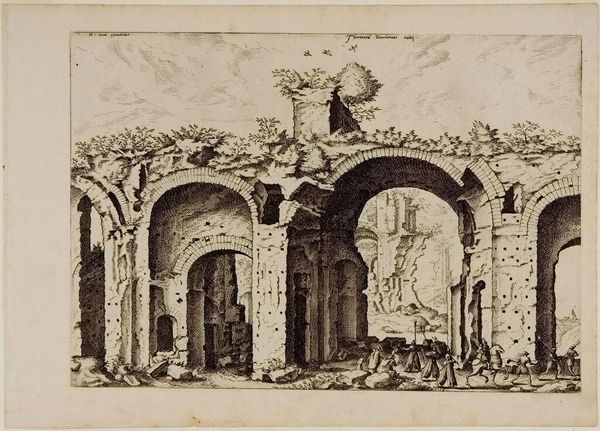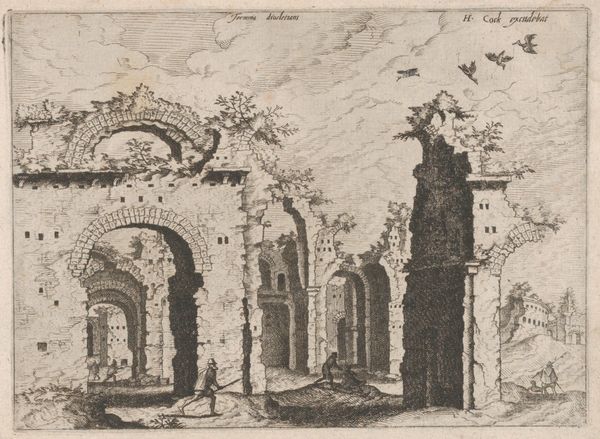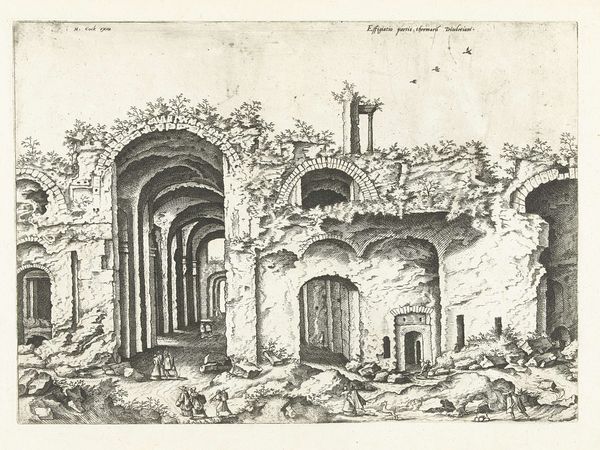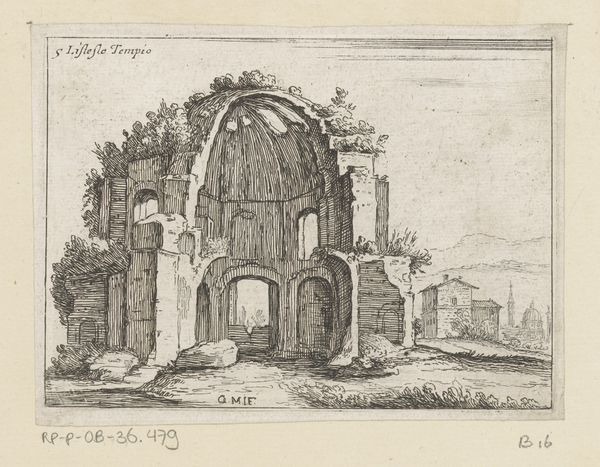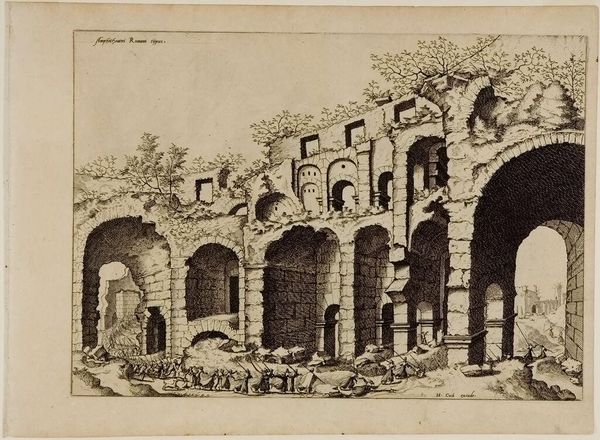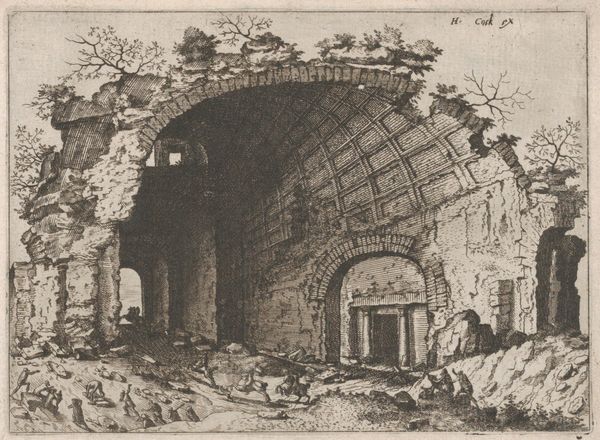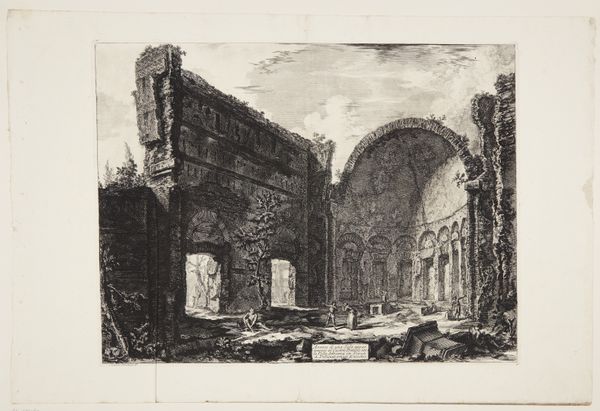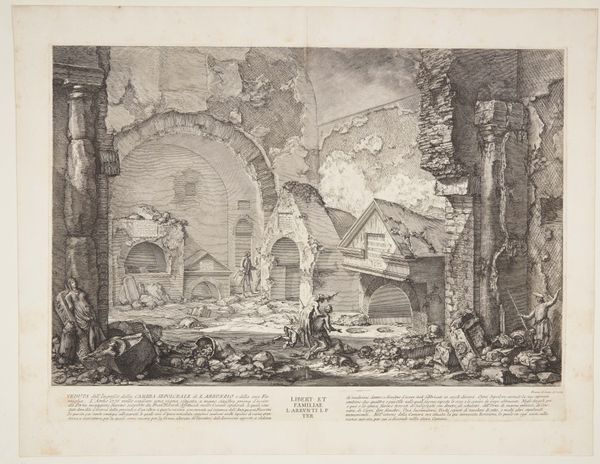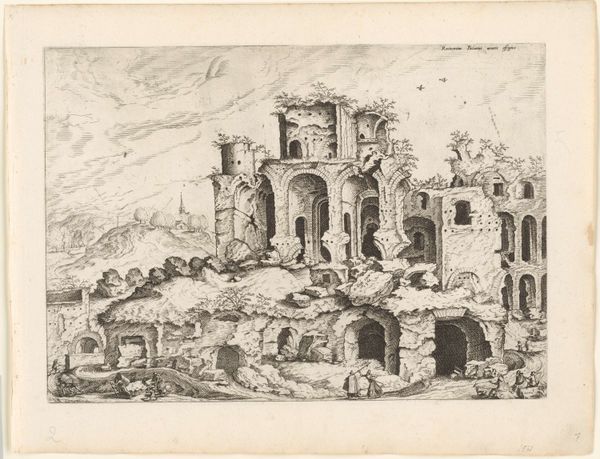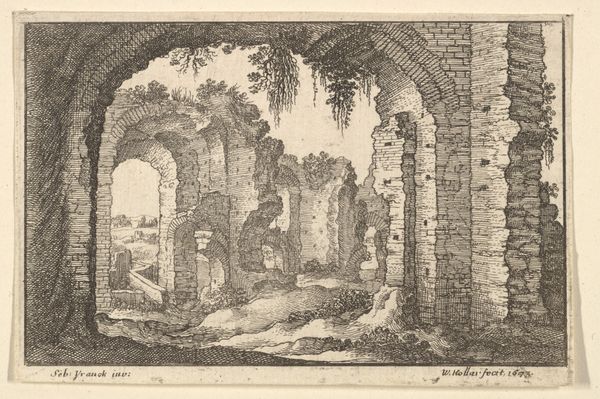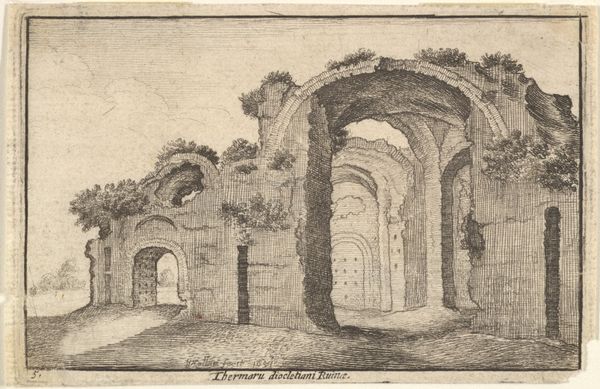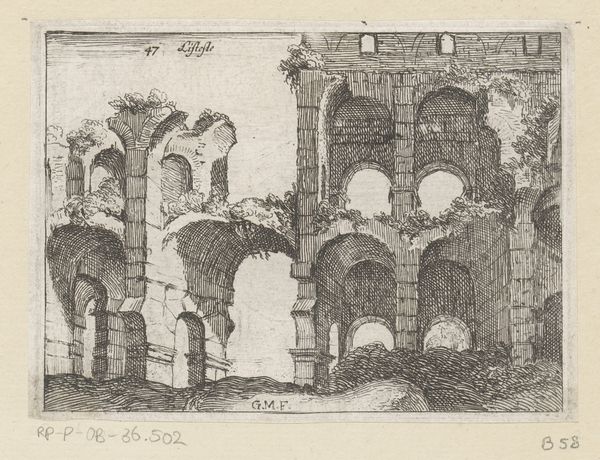
print, engraving, architecture
#
medieval
#
pen drawing
# print
#
landscape
#
perspective
#
11_renaissance
#
romanesque
#
geometric
#
history-painting
#
engraving
#
architecture
Dimensions: height 230 mm, width 325 mm
Copyright: Rijks Museum: Open Domain
Editor: This is "Second View of the Baths of Diocletian," an engraving from 1561 by Johannes or Lucas van Doetechum, currently held at the Rijksmuseum. I'm immediately struck by the ruinous state of the architecture, and the tiny figures moving through this imposing space. What narratives do you see embedded in this print? Curator: The image speaks to the transient nature of power, doesn’t it? Look at how nature reclaims the ordered space of the Roman Empire: plants sprouting from the crumbling brickwork, softening those once sharp, dominating arches. Even the figures seem dwarfed, like echoes of the past. Does it evoke a sense of melancholy, perhaps? Editor: Definitely, a feeling of time passing and empires fading. Are there specific symbols that were commonly understood in the 16th century that might deepen our understanding? Curator: The very depiction of Roman ruins carries weight. It references a classical past, but one that's irrevocably lost. Note the purposeful degradation - are those acts of decay or potential renewal? Is nature merely destructive, or offering a fresh start? Editor: So, the artist isn't just showing us a ruin; they're using the ruin as a symbol itself. The tiny figures below become almost allegorical… are they pilgrims or simply scavenging? Curator: Precisely! It invites us to consider our place within history, the enduring power of nature versus human ambition, and how stories transform over time. What stays with you after looking at this image? Editor: I’ll be thinking about how buildings and spaces continue to be repositories for stories, even when they’re falling apart. A powerful commentary on time and the impact of civilizations!
Comments
No comments
Be the first to comment and join the conversation on the ultimate creative platform.
